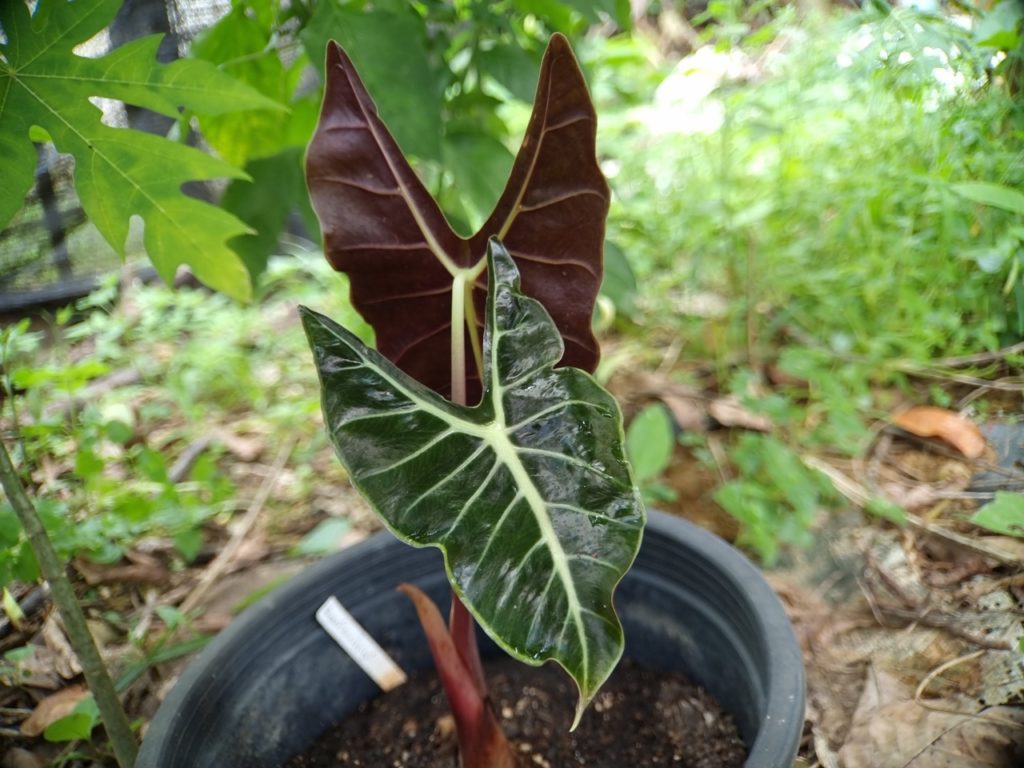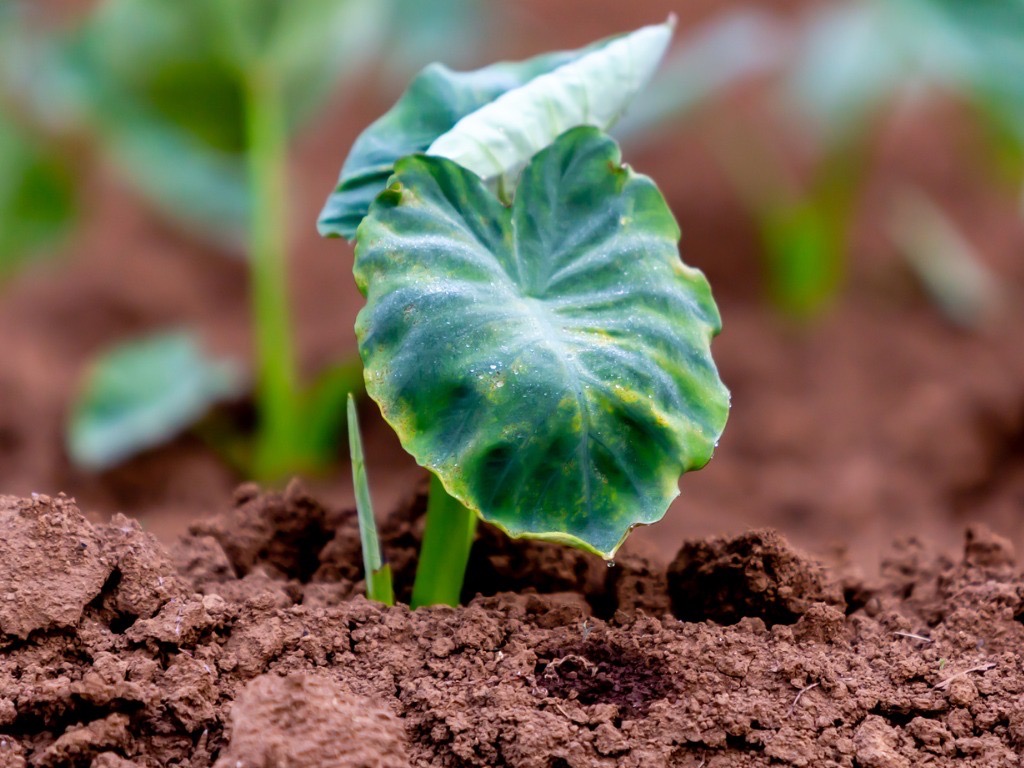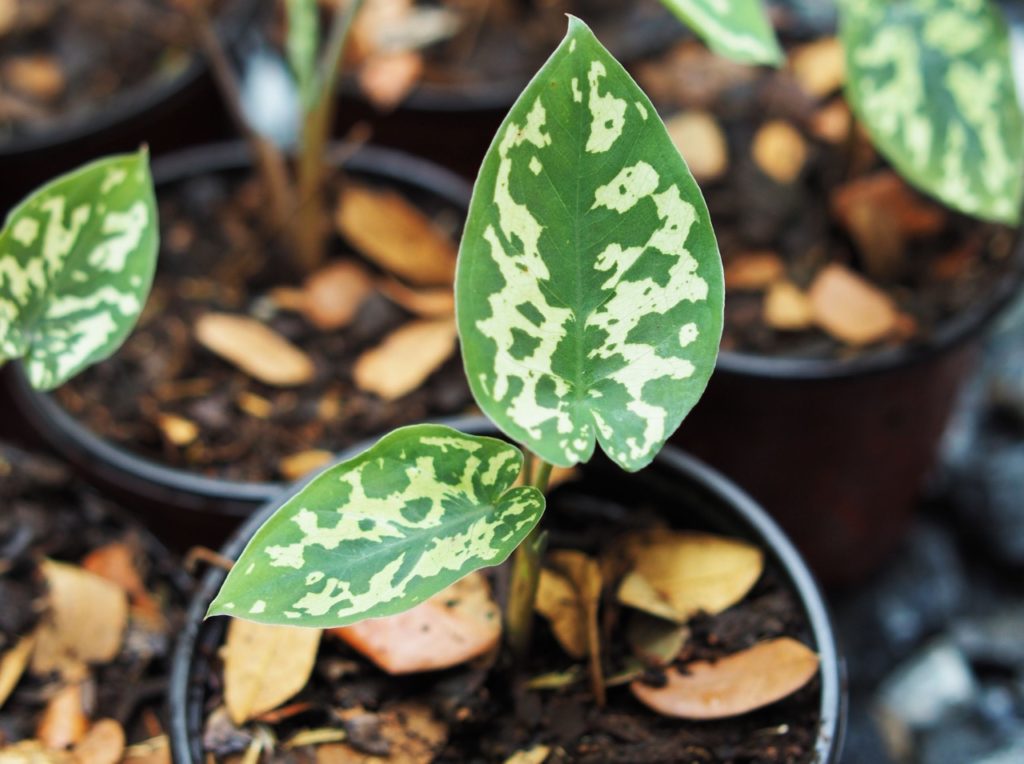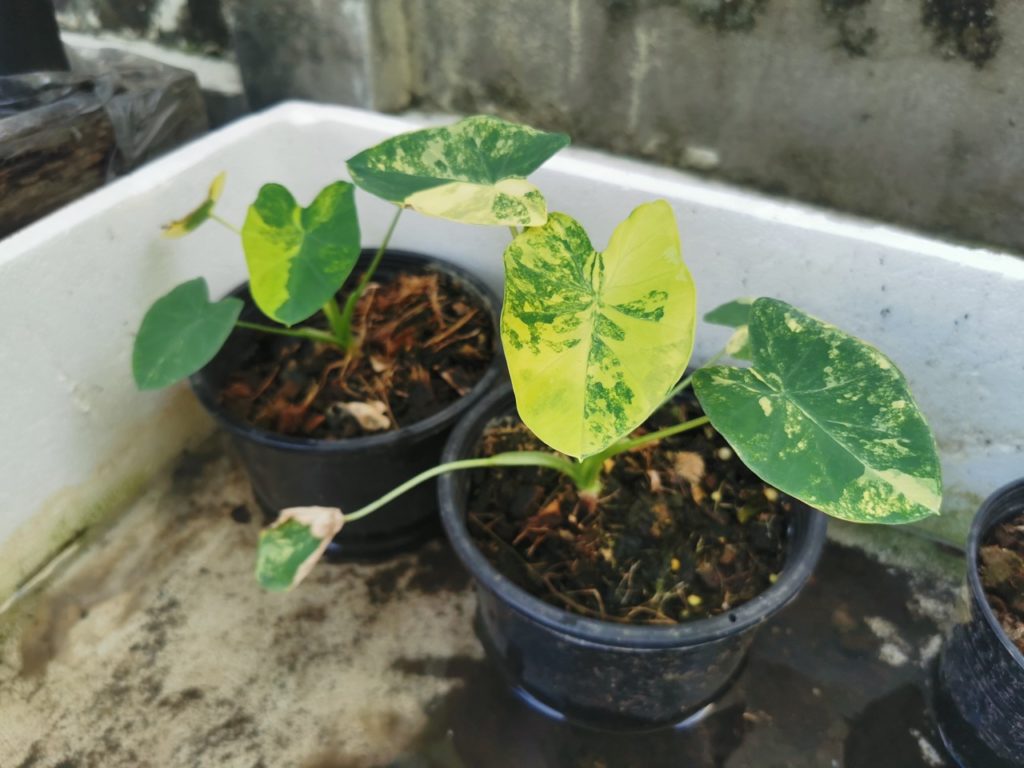They Won’t Grow As Big, But Potted Colocasia Can Be Moved Indoors Before The First Frosts

PERENNIALS > COLOCASIA > CONTAINERS

Elizabeth is a Permaculture Garden Designer, Sustainability Consultant and Professional Writer, working as an advocate for positive change. She graduated from the University of St. Andrews with an MA in English and Philosophy and obtained a Diploma in Applied Permaculture Design from the Permaculture Association.
Reviewed By COLIN SKELLY

Colin is a Horticulturist and Horticultural Consultant with experience in a range of practical and managerial roles across heritage, commercial and public horticulture. He holds the Royal Horticultural Society’s Master of Horticulture award and has a particular interest in horticultural ecology and naturalistic planting for habitat and climate resilience.
IN THIS GUIDE
COLOCASIA GUIDES
Container Growing
Indoors Growing
Propagation
Varieties
Winter Care
Growing colocasia plants is a great way to bring a tropical look to your garden or your home.
These dramatic foliage plants can be placed outdoors in a summer garden or grown indoors year-round.
Can You Grow Colocasia In Pots?
Not only is it possible to grow colocasia in pots but it is also a very good idea.

While the leaves of plants growing in containers will likely not become as large as the leaves of those growing in the ground, growing these plants in containers can be beneficial.
Growing colocasia in pots will make it easy for you to shift your plants back indoors before the first frosts, and then back outside after the last frosts in the spring.
Choosing A Container
Colocasia corms should be planted into a container which is at least 25cm across.
If potting up a pot-grown colocasia that you have purchased, you should choose a container which fairly snugly accommodates the root ball of the plant you have selected.

It is best to choose a glazed container rather than porous terracotta, as this will aid in water retention.
Plastic can retain water well, but remember that choosing plastic pots is definitely not the most eco-friendly option.
If you wish to use plastic pots, make sure you use reclaimed options rather than buying new ones.
Choosing Compost
Fill your pot with a multi-purpose, peat-free compost.

This can be a suitable potting mix that you have purchased or one which you have made up yourself.
Remember that colocasia needs a suitably moist medium amended with plenty of organic matter.
Potting Up Corms
When planting colocasia from corms in spring, you should fill your container two-thirds full with your chosen potting mix.
You should then place the corm in the pot.
The pointier end or the end with the most concentric rings should face upwards.
Fill in the area around the corm with more of the potting mix and cover it over.

The upper end of the corm should be a couple of centimetres below the surface.
Pot up your colocasia as it grows.
A mature plant will usually require a container around 40-50cm wide and deep.
The larger the container you choose, the less the growing medium will dry out, and the less frequently you will need to water your plant.
How Many Can You Plant Per Pot?
Place a single corm into a pot which is at least 25cm in diameter.
It is best to plant just a single taro plant per pot, as these plants grow relatively quickly.
Potted Colocasia Care
To care for colocasia in containers, make sure to place them in a location indoors with bright, indirect light, ideally in a humid spot like a bright bathroom or kitchen.
You can also grow them outdoors over spring and summer in partial or dappled shade.
Water regularly, making sure that the growing medium remains consistently moist.
Mulch the top of the container with compost each spring to aid in moisture retention and provide slow-release fertility.
Boost growth and health by feeding container-grown plants once a month from spring through summer with a balanced, organic liquid plant feed (such as a compost tea).

Maintaining humidity levels is especially important when growing indoors.
Mist or stand plants in a shallow, pebble-filled tray of water, as Master Horticulturist Colin Skelly shares:
“I have found it essential to stand Colocasia pots in a water tray to ensure it has sufficient moisture in hot weather.
“This provides a reservoir of water that the plant can draw on rather than relying solely on the water held in the compost.”
You can also group plants together to raise humidity levels.
Maintain a minimum temperature of 10-15°C over the winter to keep the plants evergreen all year.
As long as you are able to provide the right conditions for your Elephant Ear plant, and can care for it correctly, you should find it a relatively easy and straightforward plant to grow in pots.
